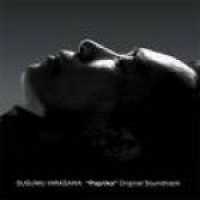Susumu Hirasawa (平沢進 Hirasawa Susumu?, born April 2, 1954 in Tokyo, Kantō region) is a Japanese electropop-artist.
In 1972, he enrolled at Tokyo Designer Gakuin College. From 1972 to 1978, he performed in his first band Mandrake, a progressive rock group influenced by King Crimson and Yes. In 1979 he formed a techno-pop band called P-Model, along with two former members of Mandrake. They released a string of albums through the 1980s, and in 1989, Hirasawa began releasing solo work, while also continuing to work with the reactivated P-Model beginning in 1992. The P-Model project continued until 1999; in 2004 Hirasawa started a new unit known as Kaku P-Model, which is effectively a solo continuation of P-Model.[1]Contents [hide] 1 Compositions and performances 2 Activism 3 Discography 3.1 P-Model 3.2 Original albums 3.3 Soundtracks 3.4 Singles 3.5 Videos 4 References 5 External links
[edit] Compositions and performances
Hirasawa uses Amiga computers extensively in his work, using applications such as Scala, Bars and Pipes, and OctaMED in the production of his music. One of the factors that set him apart from other Japanese electronic artists is ever-changing production techniques. For 2001's Solar Ray album, his recording studio was powered completely by solar energy.[2]
His subject matter can be equally unusual. A constant source of inspiration for his music has come from Thailand. In fact, the concept behind his 1995 album Sim City was drawn from his experiences travelling there, and more specifically, from Thai transsexuals. Guest Thai vocalists appear throughout that and proceeding albums, including 1996's Siren, which was also a concept album based on Thailand. As for his lyrical inspiration, Hirasawa references the philosophies of yin and yang, his travels and the principles of nature vs. machines.
Hirasawa occasionally stages interactive live performances. They merge computer graphics with his music to tell interactive stories, and involve heavy use of computers, particularly Amiga systems, motion capture cameras and video projectors. The flow of each live show is determined by audience participation; for example, Interactive Live Show 2000 was formatted as a maze, and the audience was allowed to choose which path to follow. Sometimes, audience participation plays a part in the performed music, as it did in Interactive Live Show 2000. He provided the phone numbers to four cellular phones during one song, and the audience was allowed to call the numbers to have him play the corresponding ringtone. This provided an improvised harmony between the background music and the ringing phones.[3]
Hirasawa's live music is based on samples he activates with various hand-crafted sampler machines, pre-recorded tracks without vocals, and no regular backup performers. For the Solar Ray live tour, he used solar power and a power-generating wheel, inspired by bicycles, to power his electronic equipment. DVDs are available of his innovative award-winning live performances via his website (and ordering through Teslakite). [edit] Activism
Hirasawa spoke out against "the nations that are headed towards carnage while ignoring international law" and the actions of the Japanese government in aiding such actions. Specifically, he pointed to the American response after the September 11, 2001 terrorist attack, which he believes to involve excessive murder of innocent people. As a result of his convictions, Hirasawa has offered free downloads of his music, which he hopes will be used as tools of objection.[4] [edit] Discography [edit] P-Model Further information: P-Model [edit] Original albums# Title Release date 1 Water In Time And Space 1989-09-01 2 The Ghost in Science 1990-05-25 3 Virtual Rabbit 1991-05-25 4 Aurora 1994-02-25 5 Sim City 1995-08-05 6 Siren 1996-08-01 7 Technique of Relief 1998-08-21 8 Philosopher's Propeller 2000-10-05 9 Solar Ray 2001-10-11 10 Blue Limbo 2003-02-13 11 Switched-on Lotus 2004-01-10 12 White Tiger Field 2006-02-02 13 Planet Roll Call 2009-02-18
[edit] Soundtracks
These are all animation soundtracks, except Kamui Mintara which is a documentary soundtrack.# Title Release date 1 Detonator Orgun OST 1 1991-07-05 2 Detonator Orgun OST 2 1991-10-25 3 Detonator Orgun OST 3 1992-05-25 4 Kamui Mintara 1993-01-25 5 Berserk Original Soundtrack 1997-11-06 6 Lost Legend - Ushinawareta Densetsu no Tairiku 1999-04-25 7 Sword of the Berserk (soundtrack) 1999-12-15 8 Millennium Actress Original Soundtrack 2002-09-06 9 Paranoia Agent Original Soundtrack 2004-05-12 10 Paprika Original Soundtrack 2006-11-23 11 Music For Movies 2007-06-07
[edit]
Singles# Title Release date
1 "World Turbine / Solar Ray" (世界タービン / ソーラ・レイ Sekai Tābin / Sōra Rei?) 1990-05-25
2 "Bandiria Traveling Party (Physical Navigation Version) / Haldyn Hotel (Fractal Terrain Track)"
(バンディリア旅行団 (Physical Navigation Version) / ハルディン・ホテル (Fractal Terrain Track) Bandiria Ryōkōdan / Harudin Hoteru?) 1991-06-25
3 "Tamashii no Furusato / Fish Song" (魂のふる里/フィッシュ・ソング?) 1992-04-10
4 "Siren" (サイレンSiren?) 1996-08-01
5 "Berserk Forces" 1997-11-01
[edit] Videos# Title Release date 1 Error [エラー] 1990-06-21 2 Making of Tokyo Paranesian 1994 3 Hirasawa 3 Curtains, 3 Hours - Upper (平沢三幕三時間 上 Hirasawa San Tobari San Jikan Ue?) 1994 3 Hirasawa 3 Curtains, 3 Hours - Lower (平沢三幕三時間 下 Hirasawa San Tobari San Jikan Shita?) 1994 4 Sim City Tour 1995-9-6 Tokyo Shibuya Kokaido (Sim City Tour 1995-9-6 東京渋谷公会堂?) December 1995 5 Interactive Live Show Kak? no Soprano (Interactive Live Show 架空のソプラノ?) 1997-01-21 6 Interactive Live Show 2000 Philosopher's Propeller Version 1.4 (Interactive Live Show 2000 賢者のプロペラ Version 1.4 Interactive Live Show 2000 Kenja no Puropera Version 1.4?) May 5, 2001 7 Interactive Live Show 2003 Limbo-54 November 26, 2003 8 Interactive Live Show 2006 Live Byakkoya October 31, 2007
